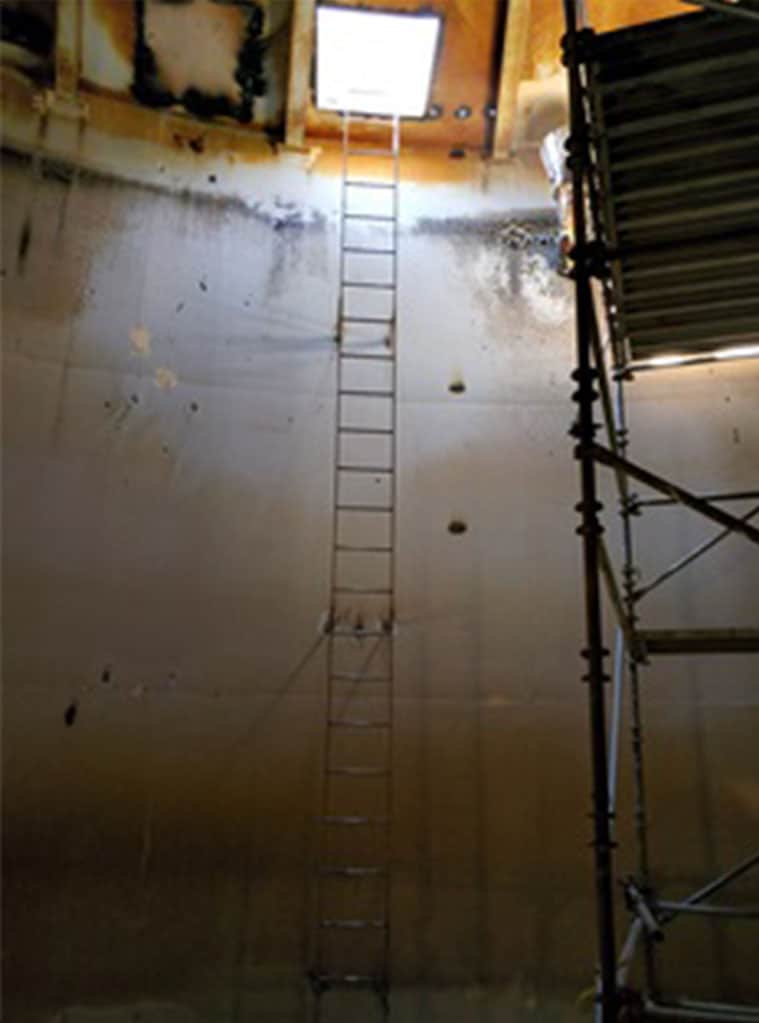Project Summary
Customer
Mariana Ranchos County Water District, CA

Type of Project
Water tank renovation and maintenance
Results
- Restored two water tanks ranging from 200,000 to 500,000 gallons
- Repaired corrosion, leaks
- Improved water quality
On the edge of the Mojave Desert, Mariana Ranchos County Water District has a more nuanced view of water than most. To the San Bernardino County, CA, community, water is a precious commodity, one that its 1,782 customers, spread over seven square miles, care about deeply.
So, it was a true crisis when the district found itself with several serious problems in its potable water storage reservoirs. Two of the tanks were experiencing premature coating problems to the point of structural failure. Inspectors found 250 separate points of corrosion on the floor and walls of the district’s 500,000-gallon tank, a 30-year-old welded steel structure. They also found biofilm, excessive oil and sand, plus two quarter-inch holes at the bottom of the tank.
A smaller, 200,000-gallon bolted-steel tank was in even worse shape, with thousands of points of corrosion, according to Jim Hansen, the water district’s general manager. Over 500 floor nuts had to be replaced. More than half of them were entirely eaten away. Officials were concerned about contamination in the tank, which was the only water resource serving more than a quarter of the district’s service area.
“It resembled the wreck of the Titanic on the inside,” Hansen said.
The district’s staff of four was spread too thin to address the issue and the $110,000 estimate to renovate the largest tank was already well beyond its means. Plus, there were the additional costs of meeting regulatory requirements.
Facing serious problems with very few resources, Hansen began to look for some alternatives.
“
When we began the program, we were very small and very, very broke. We could ill afford a $110K rehab on our 500K tank, let alone bring it up to OSHA requirements. The ability to spread the cost over a period of time made this a no brainer.
— Jim Hansen, General Manager, Mariana Ranchos County Water District

Through a contact with the California Rural Water
Association (CRWA), Hansen learned about the Tank
Asset Management Program (AMP™) offered by USG
Water Solutions (USG). Asset management is a relatively
simple approach in which a utility, like the water district,
enters into a long-term agreement with USG to rehabilitate
and maintain its water tanks. After the initial rehabilitation,
the municipality transfers the responsibility for annual tank
inspection and maintenance to USG and the company
assumes all ongoing maintenance risk for a set annual
cost. Funds are then accrued annually to cover the cost of
future rehabilitation.
The district quickly initiated an agreement with USG. The
program included complete rehabilitation of the two ailing
tanks, encompassing interior and exterior coatings and
structural steel repairs. Plus, several safety upgrades —
relocating the main access hatch on the top of the tanks,
to comply with OSHA regulations. In addition, the roofs
of the tanks were painted white to maintain cooler water
temperatures.
An additional 200,000-gallon bolted steel tank was added
to the program but will not be rehabbed for another few
years.

